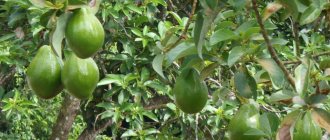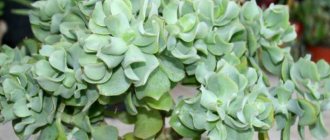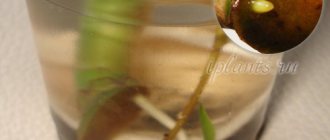A lemon tree on the windowsill is a real decoration of the house. In addition to beautiful shiny dark green foliage and a spreading crown that pleases the eye, it can boast that it bears fruit well at home.
Freshly picked indoor lemons are much tastier and healthier than store-bought ones, so this plant has double benefits - both aesthetic and practical.
How to plant with a seed?
The seeded lemon tree adapts perfectly to indoor conditions. It is hardier than a plant planted by cuttings. It is best to plant at the end of winter, beginning of spring.
The procedure will require several manipulations:
- First you need to get 8-10 seeds, then soak them in cold water for 24 hours.
- Then collect soil in a pot with drainage holes and plant the seeds.
- It is better to make the soil yourself. Sand, humus, earth, charcoal are suitable for this. We deepen the seed by 2-3 cm. Water constantly and do not let the soil dry out. Sprouts should appear in 3-4 weeks.
To understand how to grow a lemon tree, you need to know not only the rules for caring for it, but also what containers it feels good in.
It is best if the pot is breathable, for example, pottery. But then the plant will need to be watered much more often, because the container dries out quickly.
Lemon care at home
In general, lemon is not a very capricious plant. It can be grown in a fairly wide range of temperatures. However, in order to achieve flowering and fruiting, it is necessary to follow the rules of care somewhat more strictly.
Lighting
Like many plants, lemon prefers bright, but diffused sunlight. If the pot is on the windowsill, on summer days it needs to be shaded or moved deeper into the room to avoid sunburn.
In winter, you can make up for the lack of lighting with ultraviolet lamps.
The plant does not like it when the light changes direction, especially during flowering, and may react by dropping flowers and buds. Therefore, it is not recommended to frequently turn the pot or move it to another place.
Temperature
Indoor lemon is not very picky about the room temperature - the main thing is that it does not go beyond +15...+27 °C. In winter, the plant can be kept in a cooler room, but not below +5 °C. Under such conditions, the tree falls into suspended animation without shedding its leaves.
The main requirement is the absence of sudden temperature changes. Lemon does not tolerate them and can drop all its leaves.
Not recommended:
- radically ventilate the room using an open window, exposing the plant to a draft;
- move the pot from a warm room to a cool one or vice versa;
- with the first autumn cold, immediately bring it into the warmth from the street;
- If you buy a plant in a store in winter, you will have to carry it in the cold.
Excessive heat does not benefit the tree in the spring, when it is about to bloom. During this period, the optimal air temperature is +14...+18 °C, otherwise flowering may not occur or the already formed buds risk falling off.
Air humidity
Citrus trees are moisture-loving. For full growth they require air humidity of at least 60%. A room humidifier, a decorative fountain, or simply expanded clay saturated with water on the tray of a pot will help provide it. In this case, you need to ensure that the water does not stagnate and cause rotting of the roots.
Watering
Citrus trees need abundant and timely watering during the period of active growth - spring and summer. In autumn and winter, the frequency is reduced, observing the condition of the soil.
If the plant is dormant in winter, water only occasionally with a small amount of water to prevent the soil from completely drying out. To do this, use settled or filtered water slightly warmer than room temperature. Cold weather can cause root rot. The plant will also benefit from melt or rain water.
Top dressing
They begin to feed the plant in March, after emerging from hibernation and with the beginning of the active growth phase. To do this, alternate organic and mineral fertilizers, adding them to the water for irrigation approximately once every two weeks. In November, feeding is stopped - in winter the plant does not need it.
Features of transplantation
For the first few years of its life, a young lemon is replanted every year. For mature plants, once every three to four years is enough, subject to annual replacement of the top layer of soil.
The optimal time is early spring, before flowering begins, or autumn.
When choosing a pot, remember that the container should not be too large - if there is too much free space, the plant directs its energy to growing roots rather than flowering. In addition, the risk of rotting is higher in spacious tubs.
Transplantation is done using the transshipment method - the roots are carefully removed along with the earthen lump, without damaging it, and placed in a new pot with a layer of drainage (for example, expanded clay) at the bottom. The trunk is not buried - the ground level must remain the same. The free space is filled with fresh substrate.
Earth mixture
The soil for growing lemons is light, neutral or slightly acidic. An earthen mixture for citrus fruits corresponds to these characteristics.
If desired, you can mix it yourself: take two parts of turf soil, one each of humus and leaf soil, and one each of sand and peat.
Crown formation
To ensure that the tree branches grow evenly in all directions, it is recommended to rotate the pot by about 30 degrees every few days. This cannot be done if buds appear on the plant - a change in the direction of light can lead to their falling off.
Crown formation begins when the lemon is one year old. To do this, the top of the tree is cut off with a sharp pruner, leaving a trunk 20 cm high. After this, side shoots appear. They are also pruned after another year so that they branch more strongly.
Pruning not only improves the appearance of the plant, it also promotes good fruiting. But plant growers do not recommend allowing the tree to bloom until the crown formation is complete.
In adult fruit-bearing plants, it is advisable to remove the shoot from which the fruit is plucked - it will no longer branch.
Flowering and pollination
The flowering process takes a lot of energy from the plant. To help it successfully begin to bear fruit, it is necessary to carefully care for it at this time.
One of the conditions is a decrease in the number of flowers on the tree. The younger it is, the less fruit it can grow. Therefore, during the first flowering period, it should not be allowed to have more than four ovaries - the rest must be removed. With each subsequent flowering, the number of fruits can be increased by two.
Pollination is a process necessary for fruit set. Under natural conditions, it occurs with the help of insects. You can easily do this at home with a regular brush, carefully transferring pollen from flower to flower.
Transfer
The plant is replanted in early spring or late autumn.
It is important that the surface of the substrate is 2 cm below the edges of the pot, and that the root collar is level with the ground. The day before the event, water the tree generously.
We recommend reading:
- Flowers for a flower bed blooming all summer until autumn: photo and name
- Fern and its types: characteristics, features and propagation tips
- Autumn flowers in the garden: photos and names
Place drainage at the bottom of the transplant container. Before the procedure, carefully examine the roots and remove blackened ones. Try to maintain com as much as possible.
General information
The scientific name of the plant is Citrus limon, it is a plant of the Rutaceae family, genus Citrus.
Where does lemon grow?
The homeland of lemons is Asia: China, India and the islands in the Pacific Ocean, from where in the 12th century it was brought to the Middle East, North Africa and Europe (Spain, Italy). Lemons are not found in the wild; most likely, they are a spontaneous natural hybrid.
People have appreciated the beauty of lemon trees and its fragrant fruits, so they are grown as a crop in many countries with subtropical climates.
Temperature and lighting
Considering that lemon is a southern plant, it loves brightness. But, it is important to remember that a young plant does not perceive direct sunlight. To form the crown beautifully, it must be constantly rotated.
An adult plant tolerates heat well. In summer, take the pot of lemon out into the yard/loggia. In winter, be sure to provide additional lighting. This is necessary so that the fruits of the lemon tree are sour, but not sour.
The air temperature, depending on the stage of life, should be within the following limits:
- active growth and flowering – within 17°C;
- beginning of fruiting – 20°C;
- rest – 14-17°C.
If you do not follow the temperature regime, the plant may get sick.
Lemon varieties growing at home
However, not all types of lemons are suitable for home cultivation. In order for the tree to take root well, bloom and bear fruit, you should choose one of the specially bred varieties:
- Mayer, meyer or Chinese dwarf is the most common, unpretentious variety. It is distinguished by its small growth (up to 1 m), dense beautiful foliage and small, but sweet and juicy round-shaped fruits.
- Novogruzinsky and Kursky are tall (up to 2 m) varieties. They require more careful attention and care. They bear fruit more often. The fruits are large and fragrant.
- Pavlovsky is an unpretentious bush-like plant of medium height (about 1.5 m) with several trunks.
- Maikopsky is a medium-sized (1.5 m) variety with thin-skinned elongated fruits.
- Eureka is a fast growing variety. It produces fruit with a thick skin and a very sour taste.
- Genoa is a high-yielding dwarf variety. It is distinguished by its tender pulp and aromatic zest without bitterness.
Top dressing
With proper care, the first fruits can appear within 2-3 years. To feed, you need to water the lemon with urea or saltpeter once a month.
We recommend reading:
- Flowers in August: photos and description
- Garden flowers that bloom in July: photos and names
Lilac - varieties, types, selection rules, planting nuances, cultivation secrets and care (105 photos and videos)
This is relevant for soil depleted in organic matter. Thanks to nitrogen, the plant will gain strength, leaves will fall, which means the winter will be lived easily.
Under no circumstances should you fertilize with microelements. The tree may die.
But you also need to be careful with nitrogen, because the tree will grow a powerful crown, and fruiting will disappear. Of course, if you need a decorative tree, then this option is just right.
Fruit ripening
How many hours of sunshine do lemons need? Trees grown at home should be kept in a place exposed to sunlight for at least 5 hours. The best growing effects are achieved when the trees receive 8 hours of full sun per day.
In our country it is often not possible to create optimal conditions that would satisfy our plants. Sometimes the summer season is not as sunny as expected.
The sun makes lemons ripen.
In addition to heating, it is necessary to ensure an adequate daily temperature range:
- during the day - sun and warmth,
- at night - cool.
Lemons require the least amount of light and are the least demanding of all citrus plants in this regard. Therefore, they are suitable for growing in regions where summers are typically colder.
Properties
Lemon leaves are very beneficial for the human body; they have many positive properties, including:
- Antibacterial;
- Antiviral;
- Anti-inflammatory;
- Wound healing;
- Strengthens the immune system;
- Choleretic;
- Astringent.
Lemon leaves have a general strengthening property; when used, they can improve the general condition of the body, tone and increase resistance to various viral diseases.
There are practically no contraindications for use. You just need to use the leaves with caution during pregnancy, and you should not use this product if you have allergies or individual intolerances.











